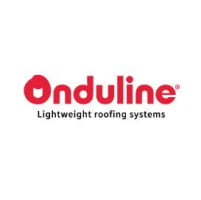-
Philippines
Copyright © 2025 Powered by BCI Media Group Pty Ltd
Confirm Submission
Are you sure want to adding all Products to your Library?
Contact Detail

Thanks to their unique, patented fastening system, ONDULINE® roofing sheets withstand high wind loads by absorbing shocks and vibrations. Wind resistance is 225 km/h when installed on metal structures, and up to 260 km/h when installed on wooden purlins.1
1 External tests Belgium Building Research Institute (BBRI)- DE 651XM223 CAR 15070/1 (29) = ONDULINE® CLASSIC Metal Purlin = 3000Pa (225 km/h) / DE 651XM223 CAR 15070/2 (29) = ONDULINE® CLASSIC Wood Purlin = 4000Pa (260 km/h).
A unique fixation system to prevent wind load from damaging the roof
To prevent wind load from damaging a roof, it is important to ensure that the roof is designed and constructed to withstand the forces that can be created by the wind. By using strong fasteners and provinding adequate anchorage at the edges of the roof you minimise the risk of wind damage.
Fasteners play a crucial role in the installation. Here are some reasons why fasteners are important when installaing a roofing sheet:
What makes ONDULINE® roofing sheets special is their unique and patented fixation system with washer of minimum 16 mm and a minimum of 10 fixations per m2. It allows to create a mechanical bond between the sheet and the support, which prevents the roof from being lifted by the wind pressure and resist even to the strongest winds.
Where roof pitch is less than 10°, there is no increase of wind load for ridge and hips.

Win load can have a significant impact on a roof and its overall structural integrity. When wind blows over a building, it creates a force that exerts pressure on the roof surface. This pressure is known as wind load, and it can cause the roof to experience various types of stress, such as uplift, suction and shearing forces.

ONDULINE® CLASSIC roofing sheets can justify a very strong resistance to high winds, up to 225 km/h when installed on metal structures, and up to 260 km/h when installed on wooden purlins.1 It makes of it a particular clever choice for coastal aread, areas subject to typhoons and where buildings are particularly exposed.
The product ONDUVILLA® can even resist to a wind speed of 315 km/h when installed on metal structure, and up to 290 km/h when installed on wooden purlins.2
All our test where run by an external third party, the Belgium Building Research Institute (BBRI).
1 DE 651XM223 CAR 15070/1 (29) = ONDULINE® CLASSIC Metal Purlin = 3000Pa (225 km/h) / DE 651XM223 CAR 15070/2 (29) = ONDULINE® CLASSIC Wood Purlin = 4000Pa (260 km/h)
2 DE 651XM225 CAR 15070/1 (29) = ONDUVILLA® Metal Purlin = 6000Pa (315 km/h) / DE 651XL019 CAR 13222/2 (85) = ONDUVILLA® Wood Purlin = 5000Pa (290 km/h)




